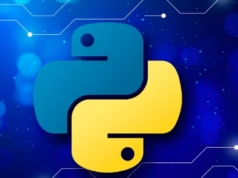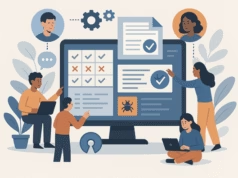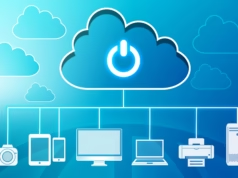Artificial Intelligence (AI) has changed how people use technology, and chatbots are at the forefront of this change. Chatbots with AI capabilities are becoming increasingly popular in the US for personal, business, and professional use. By 2025, US people will be using chatbot apps more than ever before, from ChatGPT for daily interactions to Microsoft Copilot for more productivity.
This blog explores the most popular chatbot apps among US users in 2025, analyzing their features, adoption rates, use cases, and what their rise means for the future of digital interaction and the growing landscape of AI chatbot development in the USA.
1. The Rise of Chatbots in the US Market
Over the last five years, chatbots have evolved from simple rule-based assistants to sophisticated AI models capable of multimodal communication. In the US, this evolution has been driven by:
- Generative AI advancements – Large language models (LLMs) like GPT-4, GPT-4o, Claude 3, and Gemini Ultra.
- Enterprise adoption – Businesses using chatbots for customer support, HR, sales, and automation.
- Mobile integration – Chatbot apps are now seamlessly available on iOS and Android.
- User familiarity – Mainstream apps like ChatGPT have normalized daily AI interactions.
By 2025, chatbots will no longer just be experimental tools—they will be mainstream apps shaping productivity, entertainment, and customer engagement in the US.
2. Most Popular Chatbot Apps Among US Users in 2025
2.1 ChatGPT – The Market Leader
OpenAI’s ChatGPT remains the most widely used chatbot app in the US. With the launch of GPT-4 in 2024, ChatGPT became faster, smarter, and more capable of handling voice, image, and text inputs in real time.
Why it’s popular in the US:
- Free and premium access (ChatGPT Plus) with cutting-edge models.
- Integration with Microsoft products (Word, Excel, Outlook).
- Multimodal capabilities for voice, vision, and text.
- User-friendly app with over 200 million active users globally (a large portion from the US).
Top Use Cases: Personal assistance, coding help, research, content creation, tutoring, and brainstorming.
2.2 Google Gemini – The Challenger
Google’s Gemini AI has emerged as the biggest competitor to ChatGPT in the US. By combining Google Search, YouTube, and Docs integration, Gemini has positioned itself as a knowledge-rich, multimodal assistant.
Why US users love Gemini:
- Direct integration with Google’s ecosystem.
- Strong performance in factual accuracy compared to competitors.
- Advanced multimodal reasoning with text, images, and video.
- Growing adoption in education, business, and productivity tasks.
Top Use Cases: Research, writing assistance, fact-checking, and multimedia support.
2.3 Microsoft Copilot – Productivity Powerhouse
Microsoft Copilot has rapidly grown in popularity among US professionals. By embedding AI directly into Office 365 apps, Copilot has transformed workflows for millions of employees.
Why it’s trending:
- Seamless integration into Word, Excel, PowerPoint, and Teams.
- Time-saving automation in office tasks.
- Enterprise-level adoption across Fortune 500 companies.
Top Use Cases: Report writing, data analysis, presentations, scheduling, and customer service automation.
2.4 Claude AI by Anthropic – The Ethical Choice
Claude AI, created by Anthropic, has become very popular in the United States due to its ethical and safety-oriented AI design. Claude 3, which came out in 2024, is renowned for having a longer memory and more context.
Why it appeals to US users:
- Transparent, “constitutional AI” framework emphasizing safe outputs.
- Ideal for legal, academic, and research applications.
- Competitive performance against GPT-4 and Gemini.
Top Use Cases: Legal document drafting, ethical research, enterprise compliance, and detailed content creation.
2.5 Character.AI – The Entertainment Favorite
While productivity-focused chatbots dominate professional spaces, Character.AI has captured the imagination of US users looking for entertainment, roleplay, and companionship.
Why it’s popular:
- Personalized AI “characters” for roleplay, storytelling, and gaming.
- Social features like chatrooms and group interactions.
- Younger audiences in the US engage heavily with Character.AI for fun and creativity.
Top Use Cases: Entertainment, roleplaying, creative writing, companionship.
2.6 Meta AI – Social Media Integration
Meta’s AI assistant, now embedded into Facebook, Instagram, and WhatsApp, has introduced chatbot technology to millions of casual users in the US.
Why it matters:
- Built directly into apps people already use daily.
- AI-powered search, replies, and creative tools.
- Expanding influence through integration with Oculus and VR.
Top Use Cases: Quick replies, content generation, travel planning, and social engagement.
3. What’s Driving Chatbot Popularity in the US?
Several factors explain why these apps dominate the American market:
- Accessibility: Free or low-cost versions make AI accessible to everyone.
- Integration with daily tools: From Office 365 to Google Search, chatbots are embedded in apps people already use.
- Generative AI boom: The hype around ChatGPT triggered mainstream adoption of other AI assistants.
- Personalization: Chatbots now adapt to user preferences, making interactions feel natural.
- Business adoption: Companies in retail, healthcare, finance, and education are using chatbots to save costs and improve customer experience.
4. Future Outlook: What’s Next for Chatbot Apps in the US?
Looking ahead, chatbot adoption in the US will accelerate in three directions:
- Hyper-Personalization: Chatbots will remember user preferences across apps, providing seamless experiences.
- Voice & Multimodal AI: Real-time conversation, voice recognition, and visual reasoning will become standard.
- Industry-Specific Chatbots: Tailored AI assistants for healthcare, education, law, and entertainment will rise.
- AI Regulation & Trust: As AI usage increases, transparency, safety, and ethical AI will be major priorities.
By 2030, AI chatbots could become as essential as search engines, shaping the next generation of digital interaction in the US.
Conclusion
In 2025, the U.S. chatbot market is competitive and expansive, largely dominated by ChatGPT’s strong foothold. However, other major players like Google’s Gemini are gaining traction, while Microsoft Copilot is becoming a standard in the enterprise sector.







